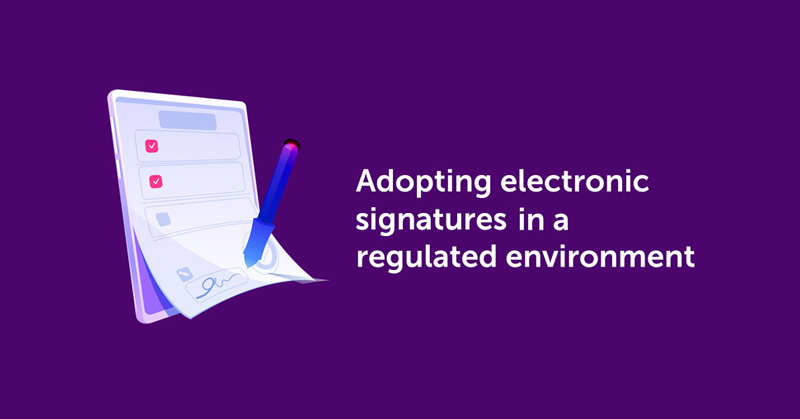1 min read
Tony's Tribe - a socially distanced fundraiser
2020 brought a lot of unexpected challenges – not many of them easy, or enjoyable. We’re all working remotely, which...
By: SQN Marketing on Aug 10, 2021 2:30:11 PM

Introduction
There’s often a reticence around adopting electronic solutions for traditional processes – EDC took hold across the industry, but it was a long slow introduction. ePRO is starting to take off now too, but we are not natural adopters of e-systems that have been common for years in other industries.
With regulatory restrictions requiring multiple signatures on many controlled documents, and global teams participating in trials, obtaining “wet ink” signatures can be a challenge – you can end up with multiple original and scanned versions of the same document. This means that when reviewing study documentation, for each signed document there can be multiple versions to monitor, maintain and file.
Added to this, the physical cost of paper, printing, postage and management of such documents can be significant. Electronic signatures, once introduced and adopted can significantly cut the physical and virtual costs of something so intrinsic in what we do.
SQN’s experience
At SQN, we have been using electronic signature systems for almost four years. We are seeing significant time savings in the obtaining, administration and management of signed documents. Of course there is an overhead to get such a system up and running – for efficient and consistent use some work is needed in setting up templates – depending on the system you select, you may need to adjust your standard document templates and possibly create additional signing templates within your electronic solution. After that, with appropriate policies, administration and training for users, the system runs very smoothly. From the perspective of corporate and social responsibility you can expect to be making significant changes – in a year we saw a carbon footprint reduction in the region of:
Which Provider?
There are a number of providers of 21CFR Part 11 compliant systems meaning the market has opened up significantly, and introducing e-signatures is more affordable than you think. Before going out to look for a provider consider-
If you’re thinking about introducing electronic signatures, here are some key features that you should ensure your selected system provides:
Summary
As with any significant change in the way a business operates, there’s an overhead. Any system requires qualification or validation and ongoing oversight. At SQN we found that with a well-organised approach the introduction of e-signatures was smooth and simple, and it soon became embedded in the business. The savings both in time, consumables and document loss risk are significant.
Aug 31, 2021by SQN Marketing
2020 brought a lot of unexpected challenges – not many of them easy, or enjoyable. We’re all working remotely, which...
Aug 10, 2021by SQN Marketing
When people think of clinical trial data capture, the paper case report form (CRF) often comes to mind. Despite...
Aug 10, 2021by SQN Marketing
Introduction
There’s often a reticence around adopting electronic solutions for traditional processes – EDC took hold...